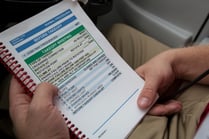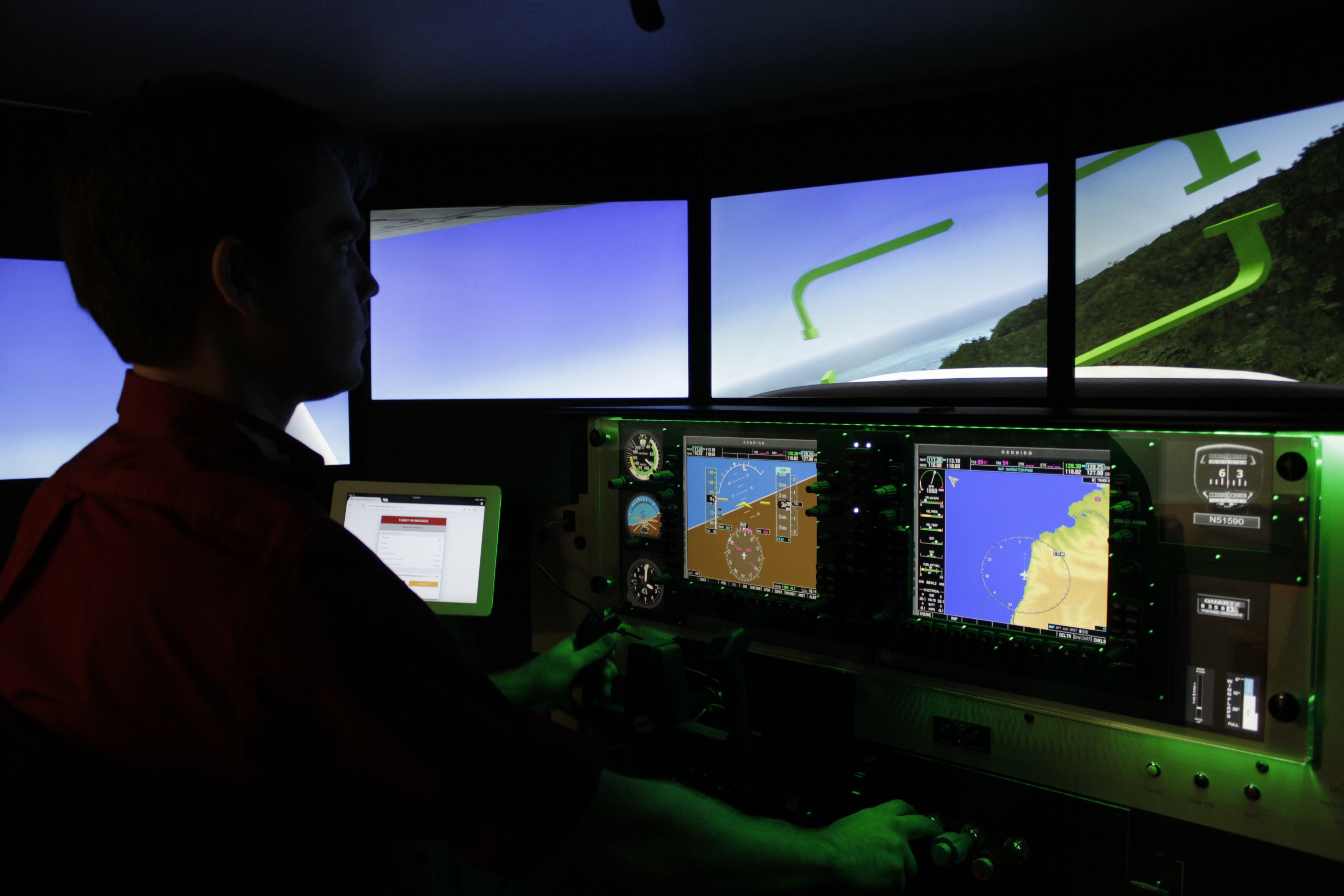Using a Simulator for Private Pilot Training
Here at
So, even though the FAA allows "only" 2.5 hours of credit towards the private pilot aeronautical experience requirements (a minimum of 40 hours), we believe you aren’t using the simulator correctly if you stop there.
Through the integration of both the simulator and the airplane, you can remove those daunting and overwhelming parts of flight training and lead your client to success. In addition to removing the distractions and required inefficiency (taxiing, flying to the practice area, etc.) of the airplane, the simulator allows you to practice individual elements of flying. You can focus on one area at a time, then pause, get instant feedback and try again. The simulator allows you to learn the basics in less time, making flying the plane easier. By utilizing advanced simulators, you get the most effective training leading to quicker progress and less frustration. What you learn in the simulator, you master in the airplane.
Related Content: 8 Tips for Teaching in a Redbird Simulator
If you are curious how to better integrate a simulator into your training, I encourage you to take a look at our ImagineFlight syllabus. With this syllabus, you can address new concepts and tasks in the simulator and then after you and your client are comfortable performing in the simulator, he can then demonstrate with confidence in the airplane. We made sure to provide simulator scenarios into the syllabus and encourage you to use some or all of its components.
 My favorite tasks to focus on in the sim are checklist usage, radio communications, traffic pattern entries, and practicing solo cross country routes. I love that our flight school partner in San Marcos has clients perform their Part 141 “Stage One” check in the simulator. It is a shorter stage check and the fact that it can be done in the sim means it won’t delay a client if the airplane or weather isn’t great that day.
My favorite tasks to focus on in the sim are checklist usage, radio communications, traffic pattern entries, and practicing solo cross country routes. I love that our flight school partner in San Marcos has clients perform their Part 141 “Stage One” check in the simulator. It is a shorter stage check and the fact that it can be done in the sim means it won’t delay a client if the airplane or weather isn’t great that day.
Of course, the simulator is a simulator and not an airplane, and we certainly recognize that. For example, if a client hasn’t yet tried taxiing in the airplane, it may be a little overwhelming and over sensitive in the sim. We discussed this in a recent webinar, Best Practices for Teaching in a Redbird. You can view a recording online.
While almost any task or maneuver can be practiced in the simulator, the FAA does point out some items that you cannot count towards the 2.5 hours of credit for the private pilot certificate. The Letter of Authorization (LOA) that certifies our devices as advanced aviation training devices (AATD), states that “training or experience requirements such as cross country, night, solo, takeoffs, and landings, or the 3 hours of training within 2 calendar months of the practical test must be accomplished in an aircraft. Private Pilot Airplane applicants must also complete the requirements for 3 hours of control and maneuvering of an airplane solely by reference to instruments specified in 61.109 in an airplane. Additionally, practical tests cannot be conducted in an AATD.”
Related Content: Can the 3 Hours of Instrument Time Required for PPL be Done in a Simulator?
Flying is amazing and fun, but learning to fly isn’t all rainbows and blue skies. The cockpit of an airplane is not always the best place to learn new skills. It’s noisy, it’s expensive, and you’re in constant motion, needing to stay ahead of the airplane. Think about the most intimidating times for your client and how the opportunity of getting in the sim first could help make it all go smoother and help to build a more confident pilot.
Share this
You May Also Like
These Related Articles

How to Create CFI Lesson Plans for the Flight Instructor Checkride

How Does a Flight Instructor Know When a Skill is Mastered?
-2.jpeg)